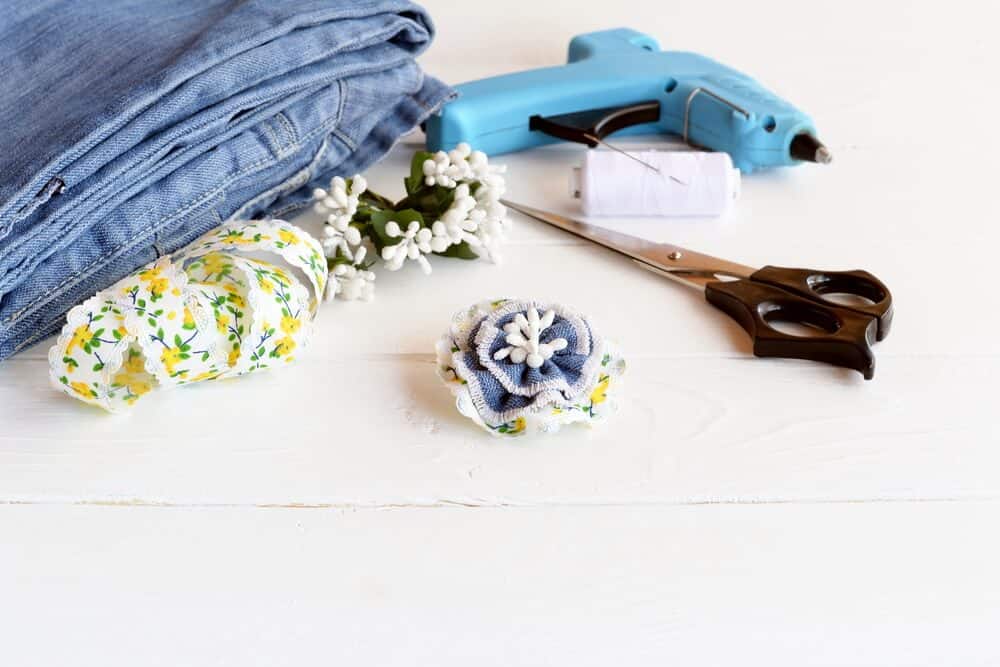Zero Waste design is gradually shifting base toward the design industry.
Let’s check out what zero waste is all about and how it influences the fashion industry.
All About Zero Waste Design
By nature, fashion is accompanied by change and innovation.
But, this sector has been really lagging behind when it comes to implementing zero-waste fashion and sustainable manufacturing.
More than ever, it’s crystal clear that the fashion industry needs a quick approach to develop a more sustainable approach.
However, practicing this strategy has not been any easier.
As mentioned earlier, the fashion industry is ridiculously reputed for massive waste creation that impacts the environment negatively.
From unused fabrics to scrappy textiles and leftover thread and paper, there’s a lot for designers to reuse, recycle, or even reduce when making clothes.
Because of the recent social awareness of more sustainable living, designers are striving to create solutions that will change people’s opinions of textile waste.
What’s Zero Waste Design?
Zero waste design or fashion has been around for a while.
Nothing new. What has changed is the underlying philosophy.
An approach that challenges designers to view current design techniques from a more sustainable perspective.
An approach that believes that wasted fabric is wasted money and a danger to the environment.
Today, many designers are working with sustainability in mind by reducing garbage recycling leftover items.
Only a few people know that fabrics worth over 400 billion square meters are produced yearly, with 60 billion square meters lost to the cutting process as waste.
That’s 15% of global fabrics wasted.
And the massive portion of this waste is lost to landfills, usually located in Asia, the world’s home of apparel.
These wastes are a result of the manufacturer’s inability to have the design process optimized.
Companies devised workable ways to solve this issue by creating automatic placement software to support the material optimization process.
This software helped the company save some parts of their fabrics during the cutting process.
However, these solutions are more economical than environmental.
Some fabric companies have been able to lower their fabric waste to 5%.
Others maintain the 15% range, which is continual because of the improper use of curves when designing patterns.
Because other countries handle the cutting and manufacturing aspect, most designers do not suffer the effect caused by their waste.
So they believe that the waste management aspect of the fabrics does not call for concerns.
That’s where the concept of zero waste Designs comes in.
How Does Zero-waste Design Help The Environment?
Zero waste keeps the landfills away from waste to prevent global warming and stops toxic particles from entering the landfill to contaminate water and the air.
Apart from sustainability, going zero waste can come with lots of benefits for the design world;
Cut back on raw materials.
A zero-waste approach requires cutting back on unnecessary raw materials to reduce resources and save some bucks.
Saves money
Because zero waste requires reducing raw material used to lower the waste rate, it’s a simple money-saving strategy.
Scales progress
The zero waste approach boosts production progress.
Why Zero-waste Fashion?
Designers implement the Zero waste fashion strategies in two ways:
First, creatively using 100% available materials
Second, upcycling by creativity designing garments from leftover materials.
Clever Cuts
The goal of zero waste pattern or design is to create clothing Patterns with limited or zero fabric waste.
A designer who implements these practices use technology, materials, and strategies to support their zero-waste design pursuit.
When it comes to techniques, designers try to fit every clothing pattern to prevent future fabric waste.
Because over 15% of global fabrics are lost to the cutting process, the approach of conserving what would have supposedly contributed to global waste into good use is environmentally friendly.
In addition, zero-waste design is about turning those waste into a completely new fashion innovation.
Zero-waste Fashion Innovations
A popular zero-waste fashion designer from New Zealand.
Holly McQuillan has played a laudable role in local zero-waste design practice.
She created a make/use program that exposes designers to the unforeseen benefits of seeing beyond the aesthetic of what we wear and their sustainability contribution to the environment with waste reduction.
According to Holly, the make/use program idea is only a chunk bite of the actions necessary to promote sustainability in this industry.
And that’s because of the complex nature of the global fashion system that requires multiple approaches for solutions.
Holly partnered with her colleague, Jennifer Whitty, to co-found space between a green fashion design platform for social awareness.
McQuillan is the author of “zero waste fashion design”, an innovative read that uses research and implementation to shed light on critical sustainable fashion design techniques.
Upcycling
The concept of upcycling in zero-waste fashion involves utilizing wastes from fabrics, accessories, or clothes and turning them into new clothing.
For example, yarns from old sweaters restructured into new yarns, or think of a new handbag made out of fabric scraps from car interior leathers.
Does Zero Waste Design Help The Environment?
Put; yes, in many ways.
During the traditional design process, designers keep their edges systematically discarded because of the difference between the central and the tighter weaves.
Contrarily, as a zero-waste approach, designers can integrate the selvages into the clothing, keeping sustainability in mind.
In conventional garments, designers typically add a 1.5-2.5 cm margin range, along with an occasional reduction of up to 0.7cm.
This could result in the crack in the seam of its fray after one of two washes which means that the garment has experienced a sewing value loss in only a few years of use.
The small seeing value has also complicated the garment’s retouching and repairing process.
Zero waste design increases the sewing value to ensure that the entire fabric surface is covered and the garment is durable and flexible.
A zero-waste design only passes the cutter blade just once in an area.
Shocking Fashion Facts
- As the second global polluting industry, fashion influences the environment and people living in it.
- The Universe is going through environmental changes. And it’s not positive.
- In a UN report, the inability of the fashion industry to implement zero waste by 2030 may impair the equal access every part of the world population has to clean water.
- In the United States, 13 million tons of textile still end up as waste – that’s over 85% of their clothing every year.
- In the last 10 years, clothing remains the fastest-growing source of waste in the United Kingdom.
Bottom line
Zero Waste design is gradually shifting base toward the design industry.
More than ever, it’s crystal clear that the fashion industry needs a quick approach to develop a more sustainable approach.
Because of the recent social awareness of more sustainable living, designers are striving to create solutions that will change people’s opinions of textile waste.
When it comes to techniques, designers try to fit every piece of the clothing pattern to prevent future fabric waste.



